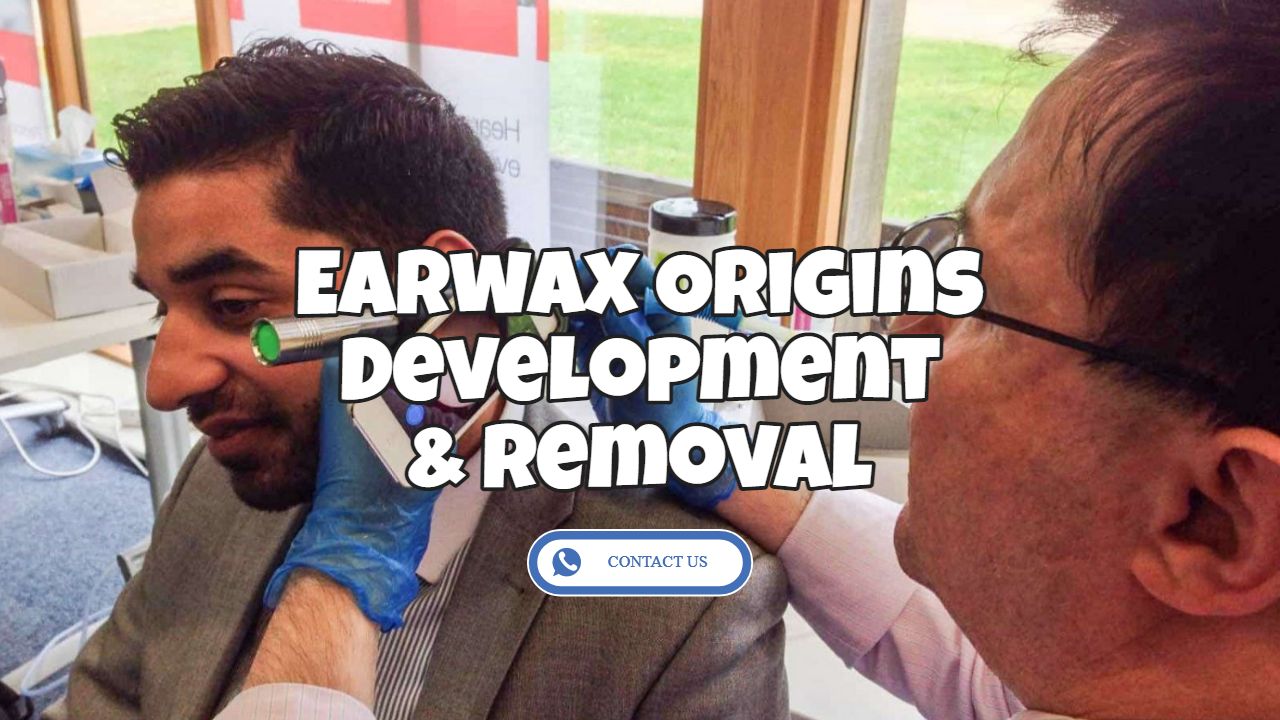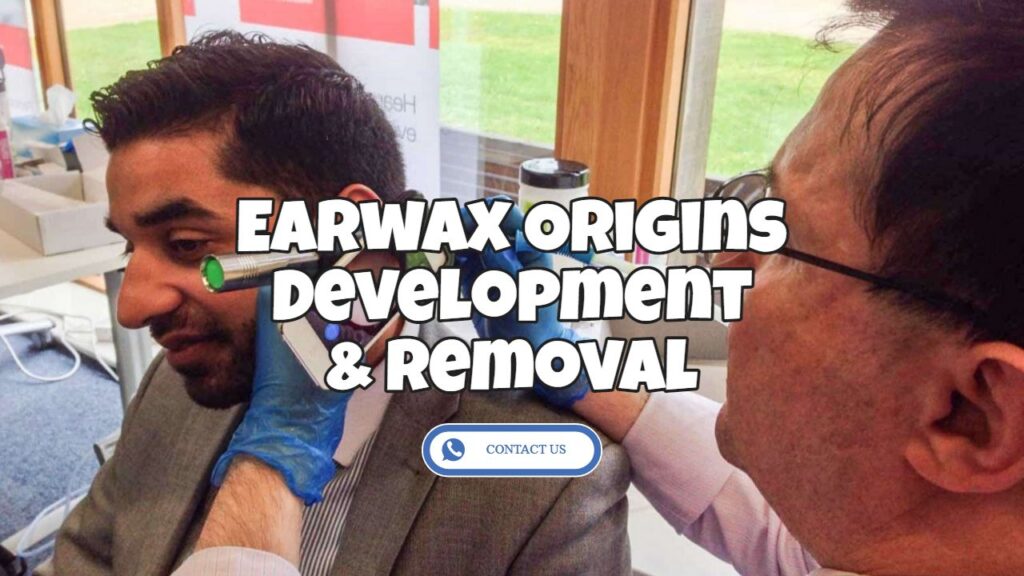Earwax is an oil that forms in your ear canal. The wax protects your ears from dust, bacteria, and other foreign matter that can enter the ear. Occasionally your glands produce more wax than necessary. Instead of coming out of the ear canal naturally, it hardens. When you try to clean your ears, you can push the wax deeper into the canal, causing more buildup and a blockage.
On this page
The origin of earwax
Earwax buildup can affect anyone. However, it is more likely to occur in:
- People who use hearing aids or earplugs
- People who put cotton swabs or other objects in their ears
- Elderly people
- People with developmental disabilities
- People with ear canals that are shaped in a way that interferes with natural earwax drainage
Earwax – also called “cerumen” – is produced by secretions from the cerumen glands in the external ear canal. The secretions help lubricate the ear canal and maintain an acidic environment that curbs harmful bacteria and fungi.
Movements of the lower jaw – such as speaking or chewing – continuously move the earwax toward the external ear canal, helping to clean the ear and push out excess earwax.
Ear wax removal by a doctor
Your doctor can remove excess earwax with a small, curved instrument called a curette or by suction during an inspection of the ear. Your doctor may also flush out the earwax with a water pick or a rubber ball syringe filled with warm water (NOT RECOMMENDED).
If earwax buildup is a persistent problem, your doctor may advise that you use earwax removal medication, such as carbamide peroxide (debrox earwax removal kit, murine ear wax removal system). Because these drops irritate the delicate skin of the eardrum and ear canal, use them only as directed.
To diagnose a buildup of earwax, your doctor will need to look inside your ear with a special magnifying instrument called an
Otoscope. Once diagnosed, your doctor can remove the earwax buildup in several ways:
- Using a small curved instrument called a curette
- by microsuction
- or by rinsing out the wax with a water pick or warm water (NOT RECOMMENDED)
If this continues to be a problem, wax removal medications may be advised.
Ear wax buildup and blockage
You may believe you can manage earwax on your own, but there is no way of you knowing now if you have excessive earwax without having someone, usually your doctor, look in your ears.
Signs and symptoms, such as ear pain or decreased hearing, don’t always mean you have earwax. You may have another medical condition affecting your ears that needs to be dealt with.
When it has been collected in the ear canal to the point that there are signs that something is wrong, we state that earwax is included. It’s important to know that ears never require to be cleaned for most people – they are created to clean themselves.
When individuals use cotton swabs or hairpins to clean their ears, Earwax accumulation and obstructions often happen. This only pushes the earwax even more into the ears and can also cause injury to the ear.
What does it mean when earwax gets stuck?
Earwax is a waxy, yellowish substance that lines the inside of your ear canal. The ear canal is the tube that runs from your outer ear to your eardrum.
Earwax helps protect the ear canal from water, infection, injury, and foreign objects. But too much earwax can cause problems. This buildup is called “impacted earwax.” Special glands in your ear produce secretions that combine with and form dead skin cells.
Hearing aid users face dilemmas when it comes to earwax. No one should attempt to remove earwax on their own. It is best to leave the earwax alone and let the ear clean itself.
If you try to clean it yourself, you risk pushing the earwax deeper, causing it to become lodged. At the same time, hearing aids or earmolds prevent the ear from cleaning itself naturally.
Therefore, a hearing aid user needs to see a doctor regularly to check his or her ears for earwax.
The American academy of otolaryngology-head and neck surgery foundation guidelines recommend that people who wear hearing aids have their ear canals checked each time they visit a health care provider or every three to six months.
What are the possible complications of earwax impaction?
Home cerumen treatments are common, and many of the above treatments are available over-the-counter or in kits to remove earwax.
Cotton ear sticks are associated with cerumen impaction, but they have been linked to impaction and otitis externa and should be avoided.
Ear candles also need to be avoided. Ear candling involves placing a hollow candle into the external acoustic canal and lighting it, with the client lying on the opposite ear.
In theory, the mix of heat and suction must remove earwax. However, in one research study, ear candles did not produce suction or get rid of earwax and even resulted in candle wax blockage in subjects who previously had clean ear canals.
Earwax, also called cerumen Auris, is a protective, normal secretion from the outer third of the cartilaginous gland of the external auditory canal. It is a mixture of mainly 60% desquamated, 12-20% saturated and unsaturated long-chain fatty acids, and 6-9% cholesterol.
It lubricates the external auditory canal. It also traps dust with other small particles and insects, preventing them from reaching and damaging the eardrum. It also protects against infectious agents such as bacteria and fungi.
The antimicrobial activity is due to the fatty acid, lysosome, and acidity of the wax. It dries out and falls out of the external auditory canal with a trapped particle through the assembly line process of epithelial migration, aided by jaw movement during chewing and speaking.
What are the symptoms of earwax impaction?
Under ideal circumstances, the ear canals should never need to be cleaned. However, this is not always the case. The ears should be cleaned when enough earwax accumulates to cause symptoms or prevent a necessary ear evaluation by your doctor.
This condition is called cerumen impaction and can cause one or more of the following symptoms:
- Pain in the ear
- A feeling of fullness in the ear
- A sense that the ear is blocked
If left untreated, excessive earwax can cause the symptoms of earwax impaction to worsen. These symptoms may include hearing loss, ear irritation, etc. A buildup of earwax can also make it difficult to see inside the ear, which can cause potential problems to go undetected.
Earwax is natural and cleans, lubricates, and protects the ear canals by trapping dirt and preventing the spread of bacteria. Most often, old earwax moves through the ear canal due to jaw movement and chewing.
When the wax spreads to the outside of the ear, it flakes off. Earwax blockage occurs when earwax, also called cerumen, accumulates in the ear or becomes hard and difficult to rinse away.
If excessive earwax is left untreated, the symptoms of ear blockage will get worse.
Who experiences earwax blockage?
A modest amount of earwax is healthy, so ear cleaning is usually not necessary. However, when earwax builds up in the ear canal, it is essential to know how to clean your ears safely. Everybody has earwax, but some people notice it in their ears – or their children’s ears – more than others.
Cerumen impaction is diagnosed by observation with an otoscope. Foreign bodies and a swollen ear canal due to otitis externa can interfere with the view of the eardrum and should be ruled out before cerumen removal is attempted.
Impaction is a widespread cause of hearing impairment in elderly patients and patients with mental retardation; therefore, evaluation for cerumen impaction in patients with hearing problems.
Similarly, it is reasonable to screen elderly patients and patients with intellectual disability for cerumen impaction upon admission to a hospital or facility and periodically after that. In one study, 35 percent of hospitalized patients over 65 years of age had cerumen impaction, and hearing improved in 75 percent of them after documented earwax removal.
Have You Seen : Acupuncture Can Help Back Pain



